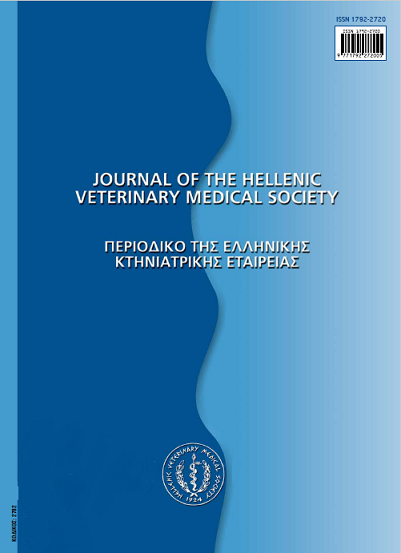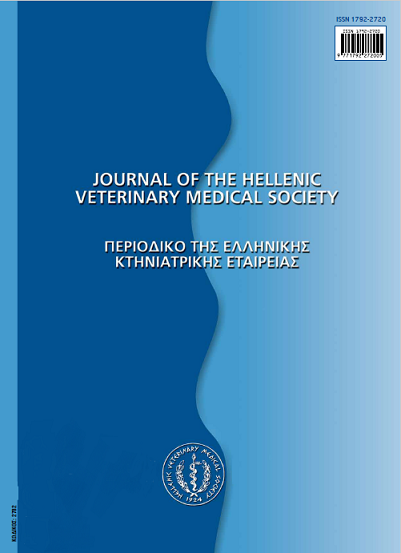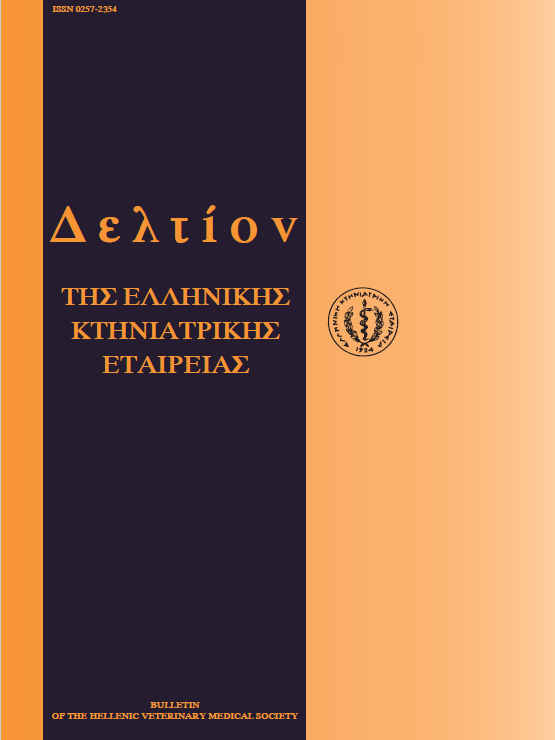Μελέτη της in vitro επίδρασης χημικών ουσιών στην κινητικότητα και την ακεραιότητα της χρωματίνης των σπερματοζωαρίων του κάπρου

Περίληψη
Χημικές ουσίες όπως η ηπαρίνη, το ιοντοφόρο ασβέστιο (Α23187) και το διμεθυλοσουλφοξείδιο (DMSO)χρησιμοποιούνται ευρέως κατά την εφαρμογή in vitro δοκιμών εκτίμησης της λειτουργικότητας των σπερματοζωαρίων, μεταξύτων οποίων η ενεργοποίηση και η πρόκληση της αντίδρασης του ακροσώματος. To DMSO, πέραν της διαδεδομένης χρήσηςτου ως κρυοπροστατευτικό, χρησιμοποιείται επιπλέον ως διαλύτης πλήθους χημικών ενώσεων σε vitro πειραματισμούς. Σύνηθες φαινόμενο είναι η τροποποίηση των πρωτοκόλλων των διαγνωστικών δοκιμών μέσω της αλλαγής της συγκέντρωσης των προαναφερόμενωνχημικών ουσιών. Οι μεταβολές αυτές θα μπορούσαν να επηρεάσουν χαρακτηριστικά του σπέρματος που σχετίζονται άμεσα με τη γονιμοποιητική του ικανότητα. Σκοπός της παρούσας εργασίας ήταν ηδιερεύνηση της in vitroεπίδρασης διαφόρων συγκεντρώσεων α) ηπαρίνης (2, 4, 6, 8 και 10 μg/ml), β) ιοντοφόρου ασβεστίου Α23187 (10, 20, 30 μΜ) και γ) DMSO (1, 2, 3 % ο/ο), στην κινητικότητα και την ακεραιότητα της χρωματίνης των σπερματοζωαρίων του κάπρου. Επιλέχτηκανκαι χρησιμοποιήθηκαν 8 σπερματοδότες κάπροι και εξετάστηκαν 20 εκσπερματίσματα σε χρονικό διάστημα 5 μηνών (Οκτώβριο με Φεβρουάριο). Η εκτίμηση της κινητικότητας του σπέρματος έγινε με τη χρήση μικροσκοπίου με θερμαινόμενηεπιφάνεια, ενώ η κατάσταση της χρωματίνης του πυρήνα των σπερματοζωαρίων μελετήθηκε με την εφαρμογή της δοκιμήςπορτοκαλόχρουν της ακριδίνης. Τα αποτελέσματα της έρευνας έδειξαν ότι η προσθήκη ηπαρίνης, Α23187 και DMSO σε συγκεντρώσεις 8 - 10 μg/ml, 10 μΜ και 1%, αντίστοιχα, είναι ασφαλής για την in vitro μεταχείριση του σπέρματος του κάπρου,δίχως κίνδυνο υποβάθμισης της κινητικότητας και της ποιότητας της χρωματίνης του πυρήνα των σπερματοζωαρίων.
Λεπτομέρειες άρθρου
- Πώς να δημιουργήσετε Αναφορές
-
TSAKMAKIDIS (Ι.Α. ΤΣΑΚΜΑΚΙΔΗΣ) I. A., KHALIFA, T., LYMBEROPOULOS (Α.Γ. ΛΥΜΠΕΡΟΠΟΥΛΟΣ) A. G., MICHOS (Η.Α. ΜΙΧΟΣ) I. A., & BOSKOS (Κ.Μ. ΜΠΟΣΚΟΣ) C. M. (2017). Μελέτη της in vitro επίδρασης χημικών ουσιών στην κινητικότητα και την ακεραιότητα της χρωματίνης των σπερματοζωαρίων του κάπρου. Περιοδικό της Ελληνικής Κτηνιατρικής Εταιρείας, 62(2), 118–124. https://doi.org/10.12681/jhvms.14840
- Τεύχος
- Τόμ. 62 Αρ. 2 (2011)
- Ενότητα
- Research Articles
Οι συγγραφείς των άρθρων που δημοσιεύονται στο περιοδικό διατηρούν τα δικαιώματα πνευματικής ιδιοκτησίας επί των άρθρων τους, δίνοντας στο περιοδικό το δικαίωμα της πρώτης δημοσίευσης.
Άρθρα που δημοσιεύονται στο περιοδικό διατίθενται με άδεια Creative Commons 4.0 Non Commercial και σύμφωνα με την άδεια μπορούν να χρησιμοποιούνται ελεύθερα, με αναφορά στο/στη συγγραφέα και στην πρώτη δημοσίευση για μη κερδοσκοπικούς σκοπούς.
Οι συγγραφείς μπορούν να καταθέσουν το άρθρο σε ιδρυματικό ή άλλο αποθετήριο ή/και να το δημοσιεύσουν σε άλλη έκδοση, με υποχρεωτική την αναφορά πρώτης δημοσίευσης στο J Hellenic Vet Med Soc
Οι συγγραφείς ενθαρρύνονται να καταθέσουν σε αποθετήριο ή να δημοσιεύσουν την εργασία τους στο διαδίκτυο πριν ή κατά τη διαδικασία υποβολής και αξιολόγησής της.





